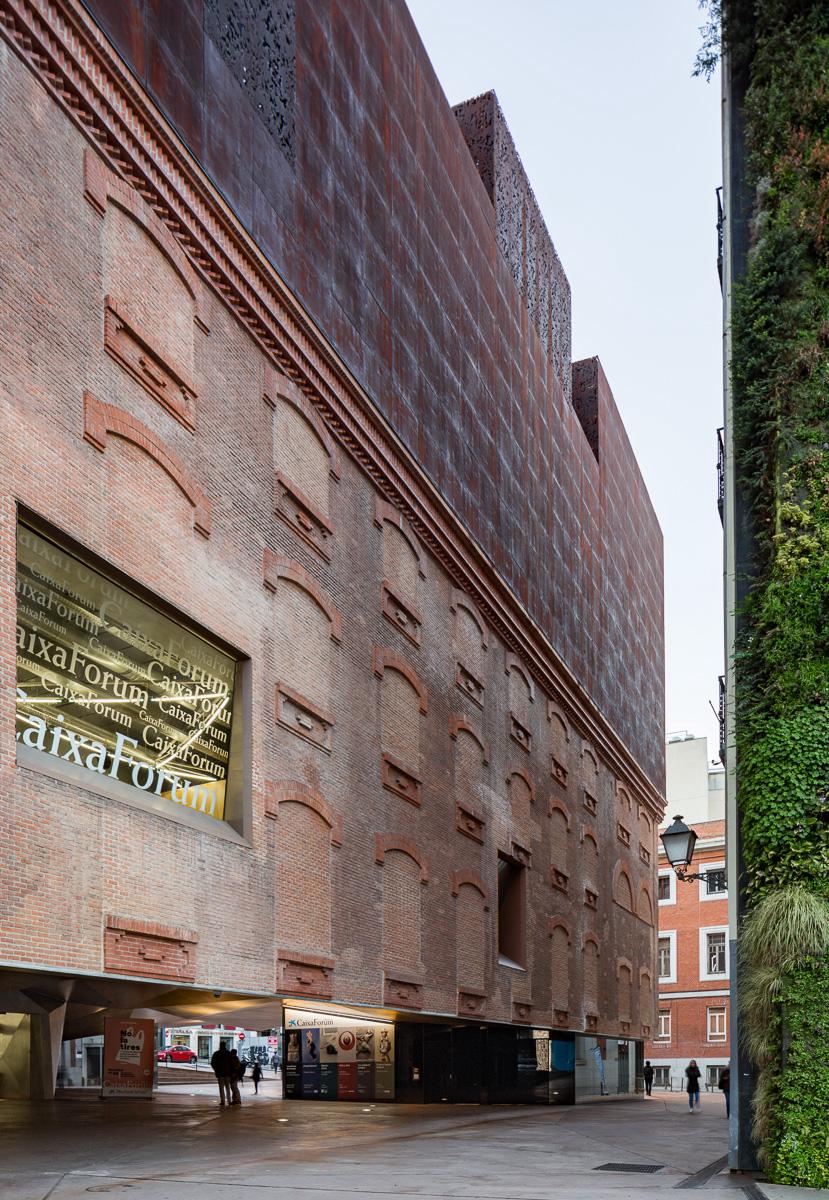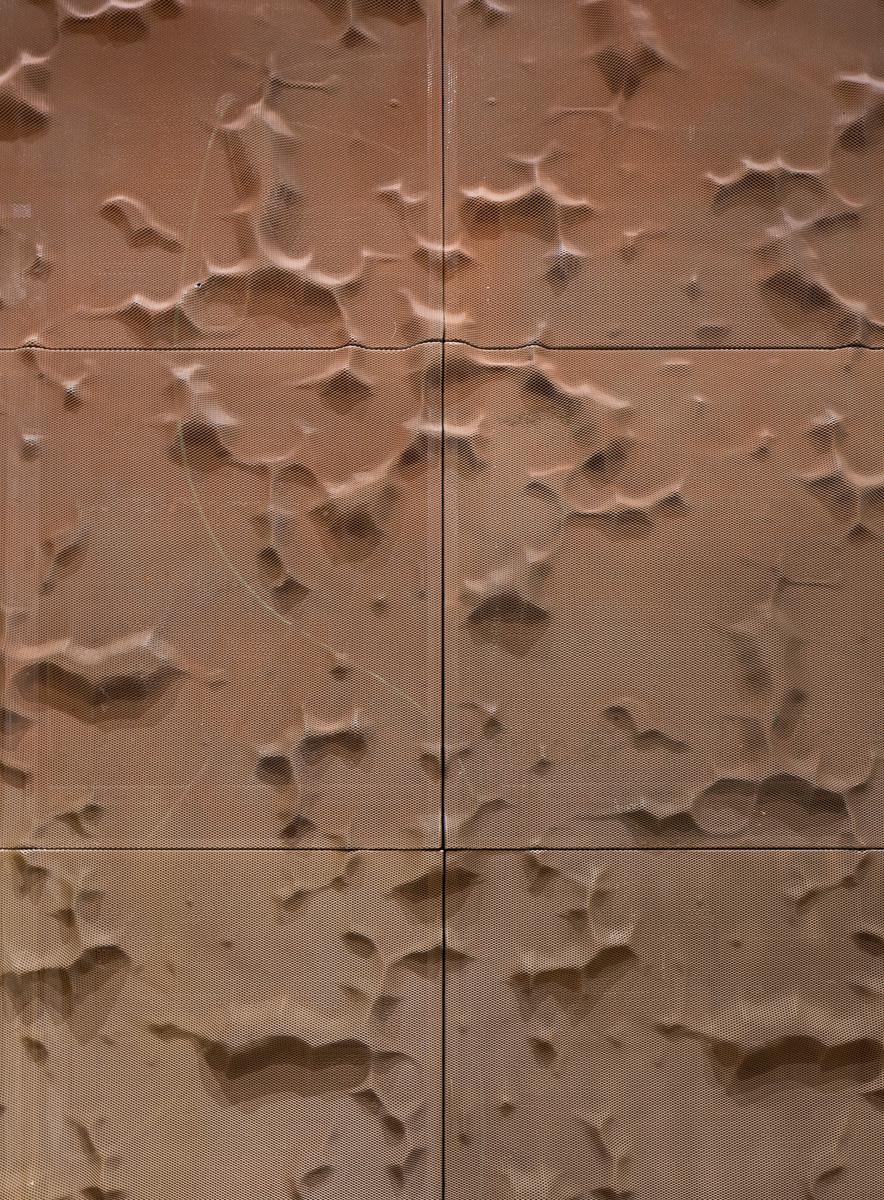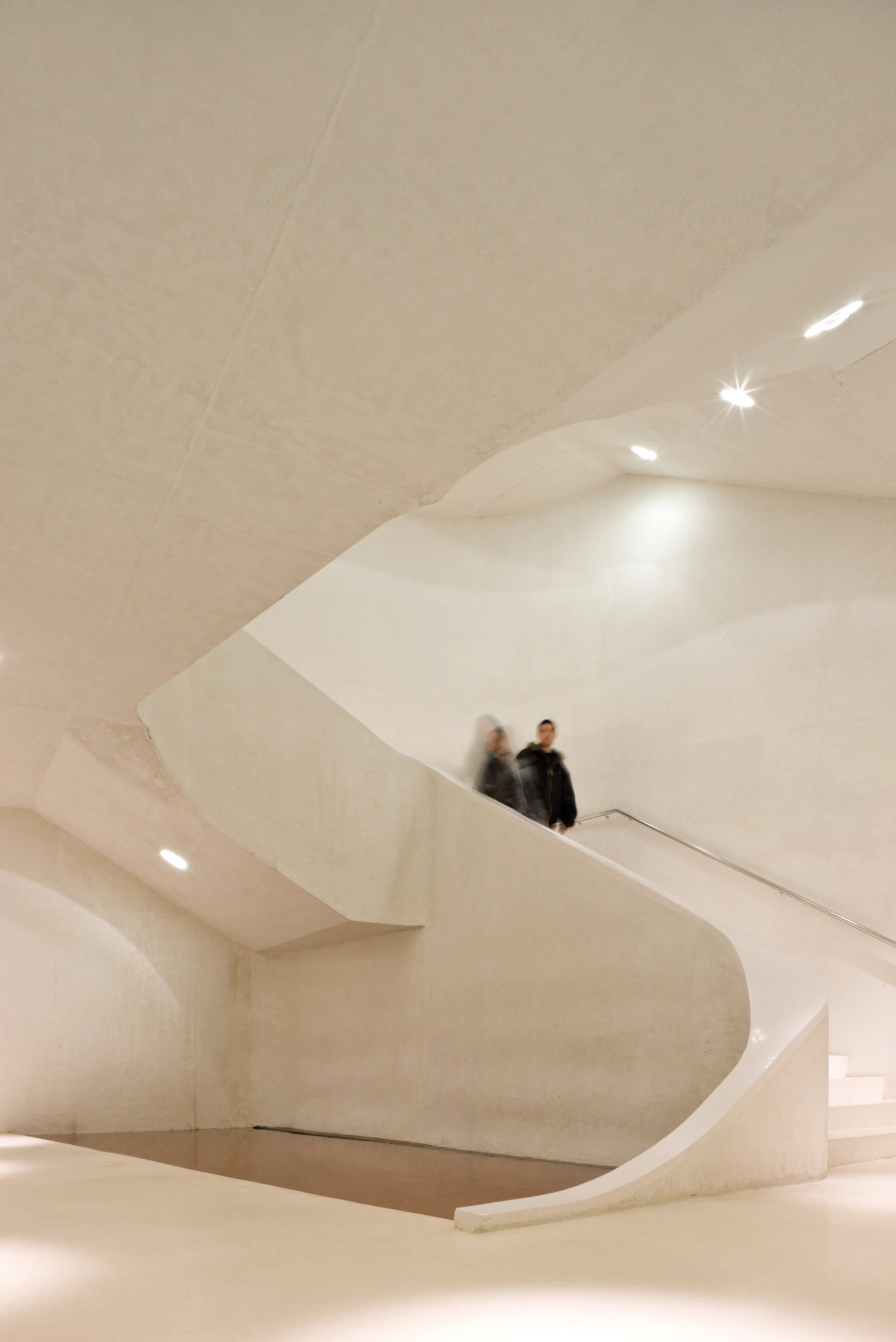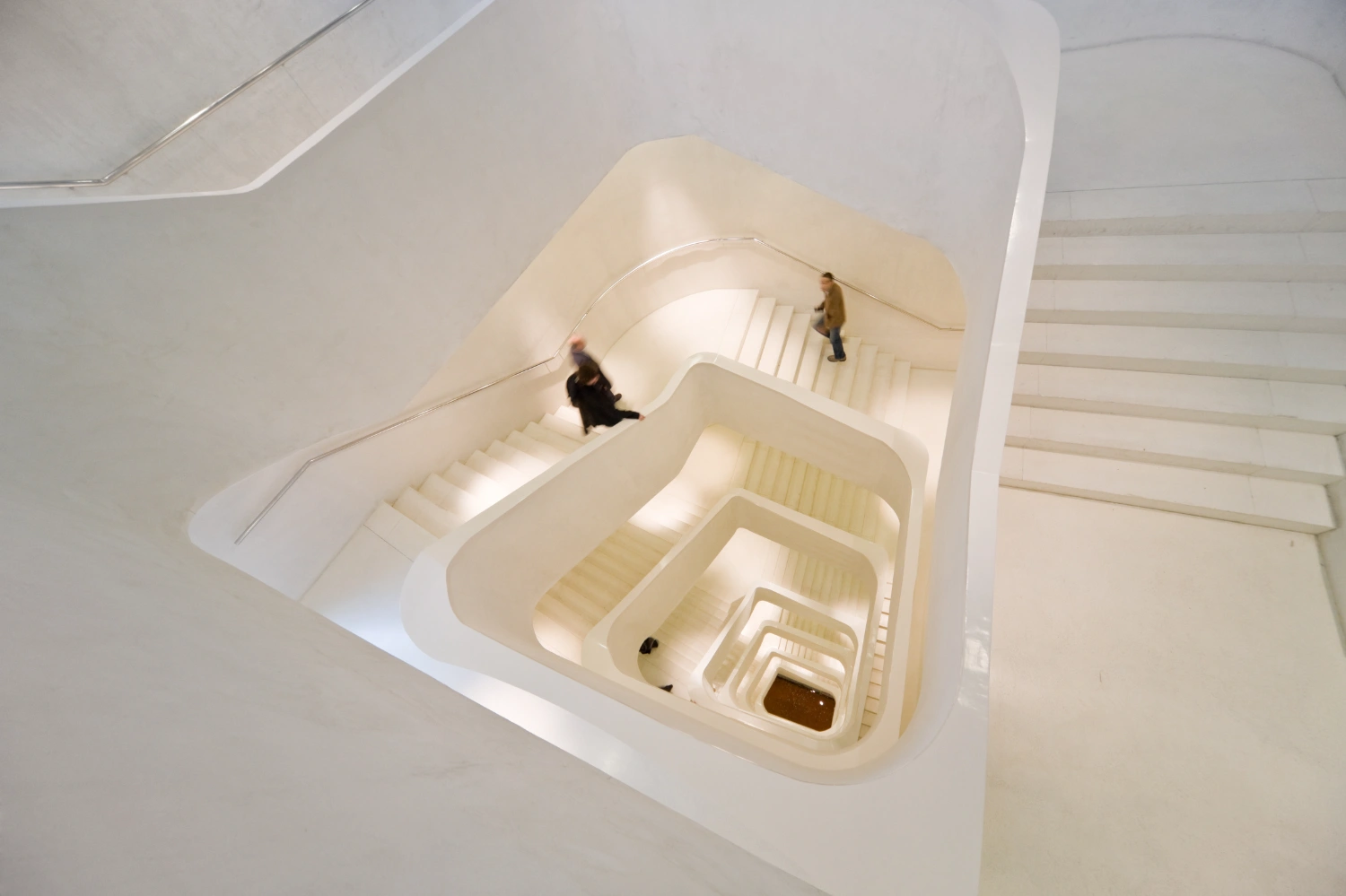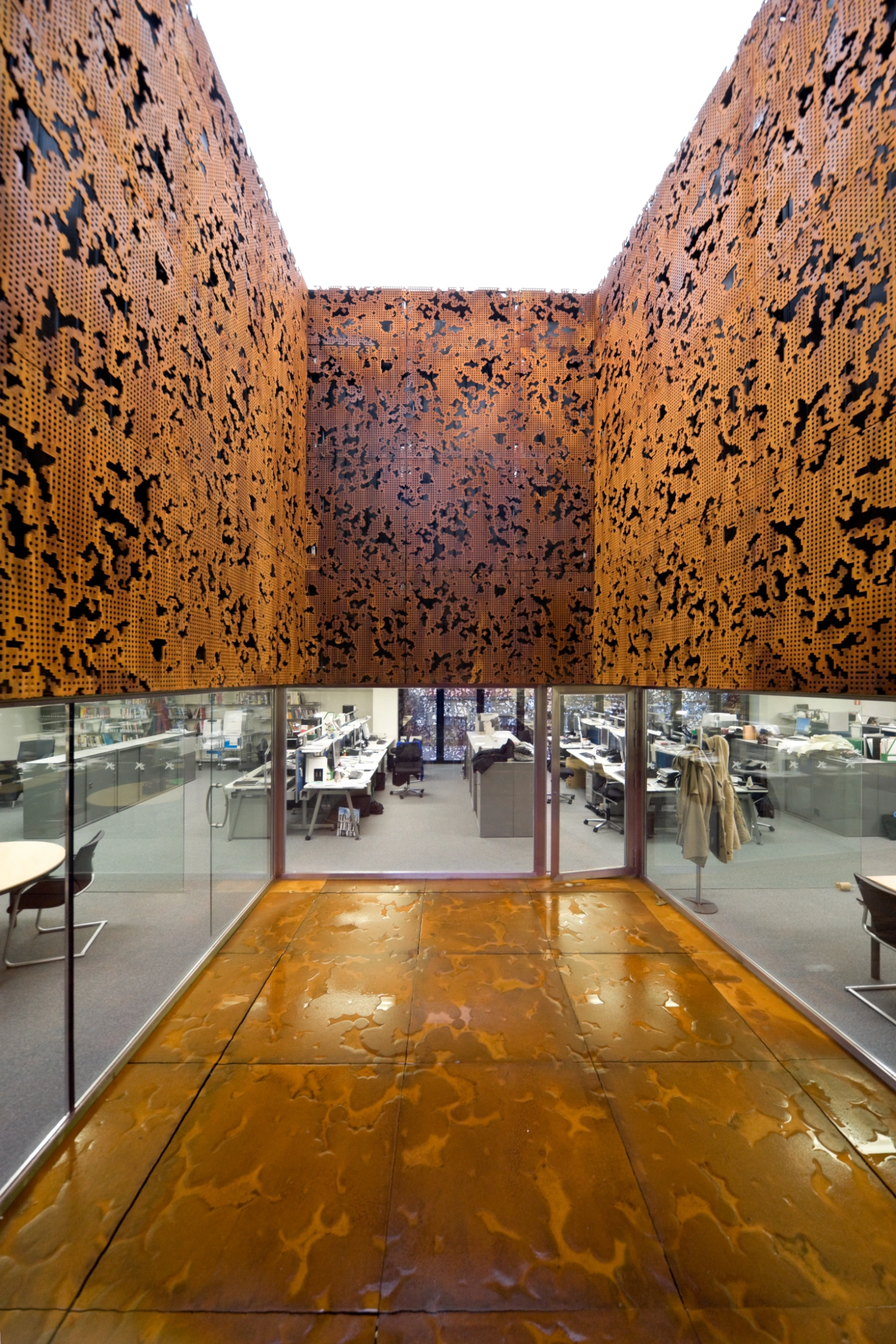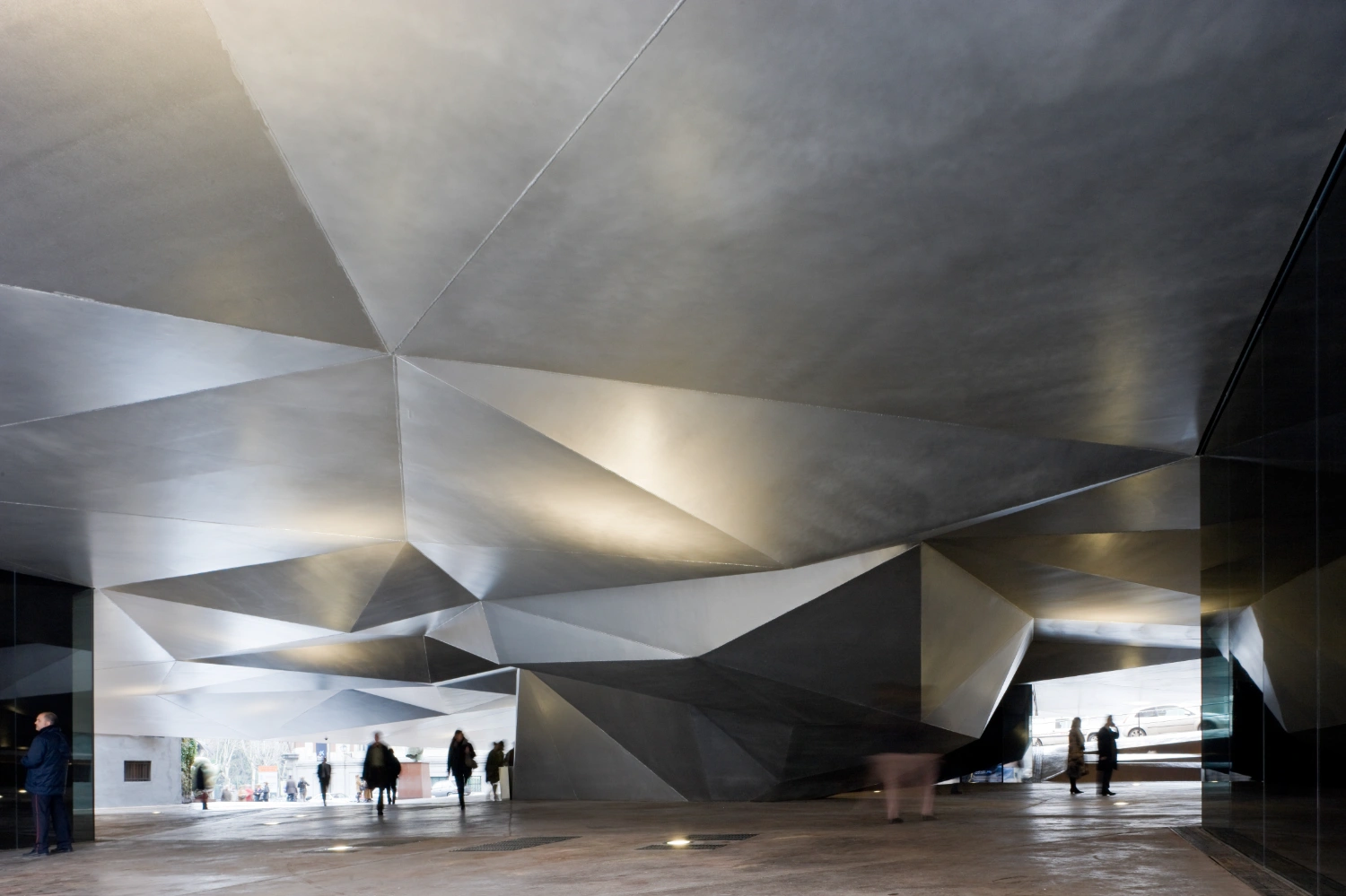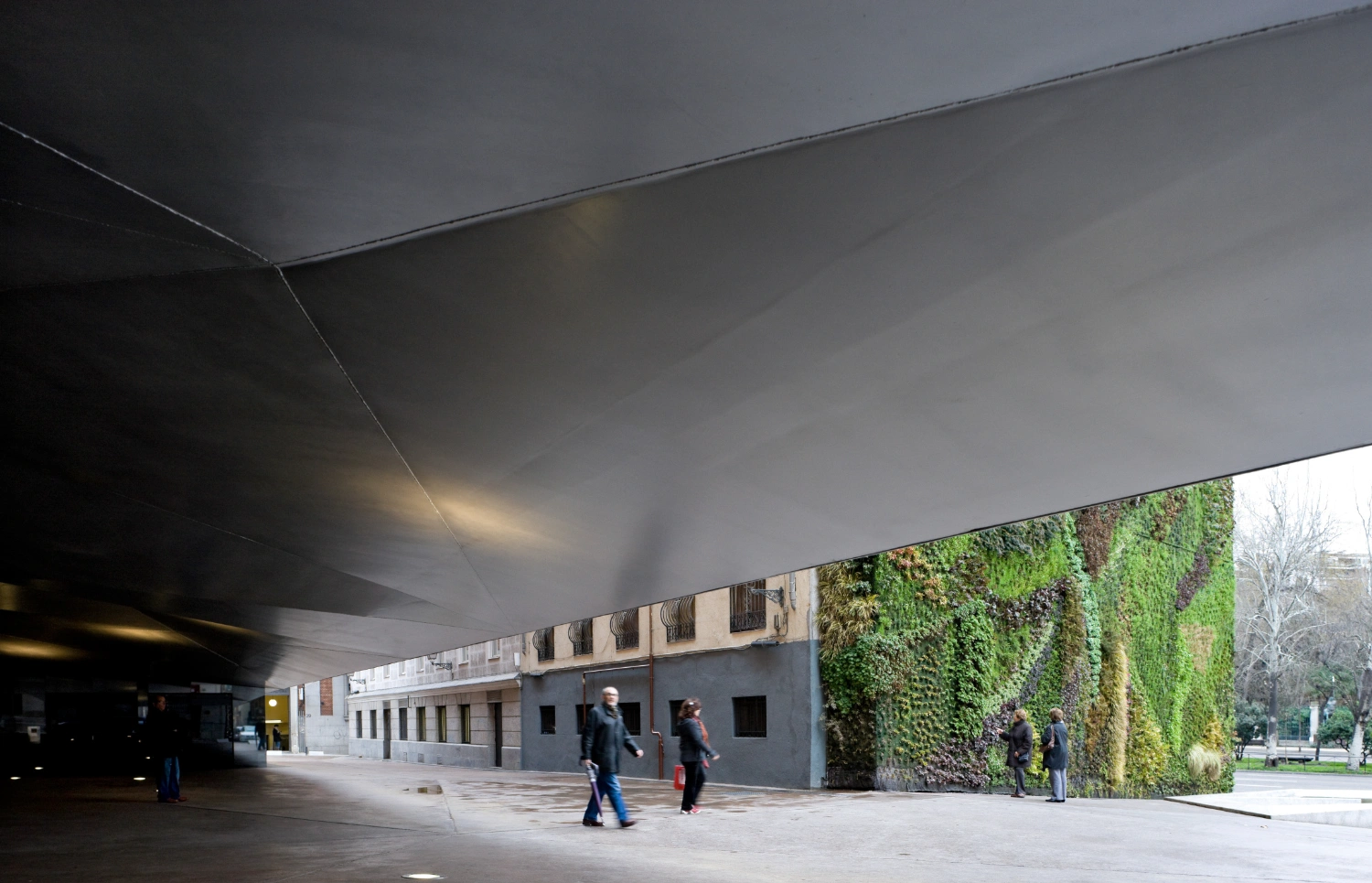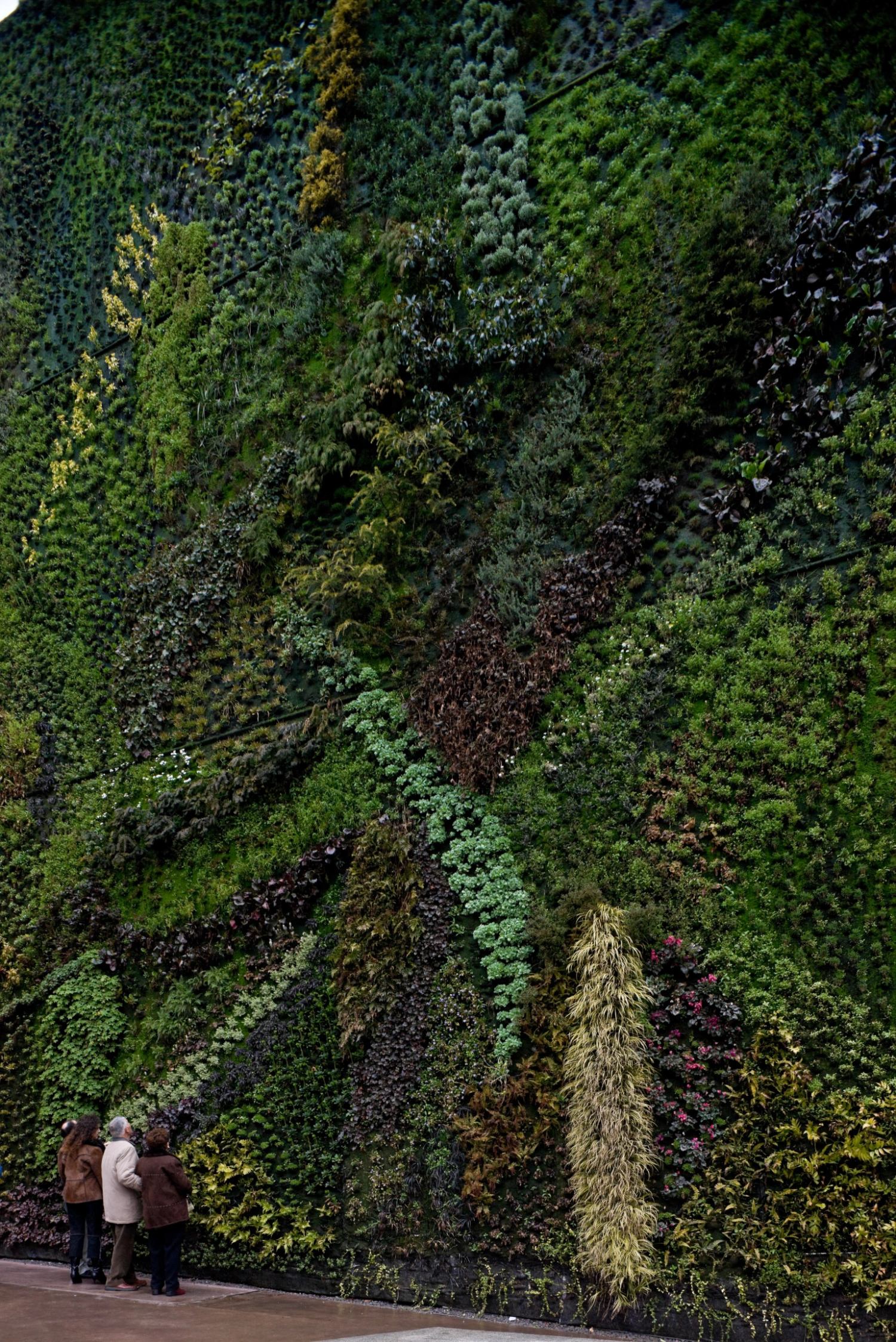Suspended in a gesture of near-defiance, Herzog & de Meuron’s CaixaForum Madrid doesn’t so much occupy its site on the Paseo del Prado as levitate above it.
Completed in 2008, the project reconfigures a relic of Madrid’s industrial past—the Central Eléctrica power station—into a cultural force field, one that actively pulls the public into its gravitational orbit. The gesture is bold: the brick shell of the former power station is surgically detached from its base, creating a shaded void beneath that becomes both plaza and portal. This architectural sleight of hand transforms mass into magnetism.
What once was a neglected parcel—complete with an incongruous gas station—is now a civic fulcrum. The demolition of the gas station was not mere site clearance but a strategic subtraction, carving out a plaza that opens the building to the city. This clearing becomes critical in a dense urban fabric, allowing the CaixaForum to breathe, to announce itself not with height or volume, but through urban choreography and spatial generosity. It is a rare instance where architecture manipulates ground and gravity to reveal its own intent.
The renovation hinged on a single preserved element: the brick façade. By lifting it, Herzog & de Meuron recast the historical structure not as a nostalgic shell but as an active protagonist in a new urban narrative. The resulting form is not mimetic but rather mimetically dissonant—it mirrors the irregular roofscape of surrounding buildings while remaining unmistakably other. This paradox of familiarity and alienness lends the building its charge.
Above ground, the CaixaForum unfolds as a sequence of spaces designed less for procession than for pause. Loft-like galleries offer a sense of expansiveness within the confines of the brick envelope, while the uppermost floor—housing a restaurant and offices—embraces a more sculptural spatial logic. Below ground, an auditorium and service spaces are embedded within the new plaza’s landscaped topography, rooting the building in infrastructural necessity without diminishing its weightless illusion.
CaixaForum Madrid resists easy classification. It is neither simply a renovation nor a new build, neither wholly object nor landscape. It operates somewhere between—part infrastructural choreography, part sculptural urbanism.



